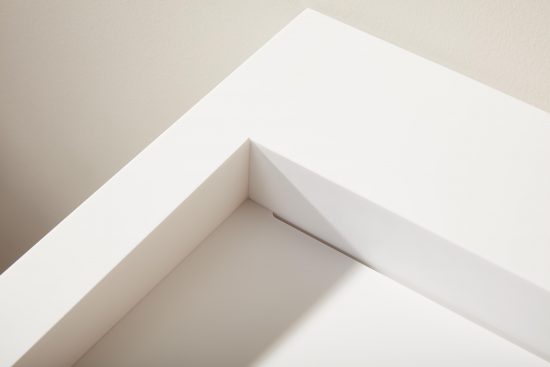Hand-washing basins in commercial washrooms have traditionally been made from vitreous china.
At The Splash Lab, we craft our sinks from two materials only: solid surface and marble. Here, we compare both materials to help architects, contractors and your clients make informed decisions when specifying their washroom projects.
Provenance: Marble
The city of Carrara is home to a 2,000-year-old marble quarry. The white and blue-grey stone found in this quarry is known as Carrara marble and has been the material of choice for some of the world’s most iconic buildings and works of art, including the Pantheon in Rome, the Venus de Milo and Michelango’s David. Marble is fabricated by sourcing, milling, grinding and polishing the raw stone, and the ancient Romans were the first society to use Carrara marble as both an interior and exterior building material. Over the next 1,000 years, the marble was quarried on such a large scale that the area became responsible for producing more stone than any other region in the world.
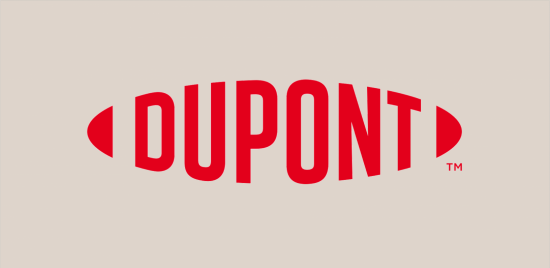 In 1963, a group of engineers and researchers from the DuPont™ Chemical Company were tasked with creating new products for the building industry. Chemist Don Slocum, who was part of the DuPont ™ think-tank at the time, wanted to create a material that was non porous; stain, chemical and fire resistant; solid all the way through; void of air bubbles; hard enough to be used as a work surface; easily repairable; had a pleasing look with a consistent pattern and colour and was able to be worked with standard woodworking tools. Natural minerals and acrylic resin were heated and polymerised to form a solid-surface material with all the above properties and in 1967, Corian® was launched. There are now other brands of solid surface available, all of which have reasonably the same composition and match the product criteria of Corian.
In 1963, a group of engineers and researchers from the DuPont™ Chemical Company were tasked with creating new products for the building industry. Chemist Don Slocum, who was part of the DuPont ™ think-tank at the time, wanted to create a material that was non porous; stain, chemical and fire resistant; solid all the way through; void of air bubbles; hard enough to be used as a work surface; easily repairable; had a pleasing look with a consistent pattern and colour and was able to be worked with standard woodworking tools. Natural minerals and acrylic resin were heated and polymerised to form a solid-surface material with all the above properties and in 1967, Corian® was launched. There are now other brands of solid surface available, all of which have reasonably the same composition and match the product criteria of Corian.
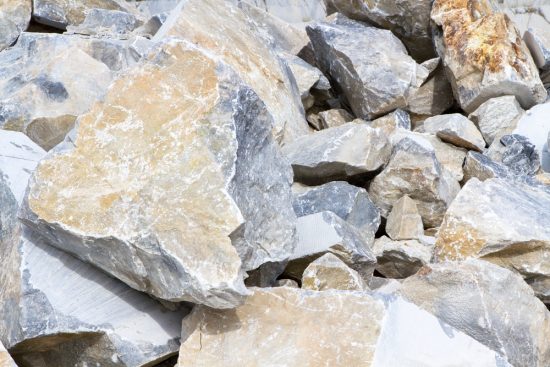 Marble is a natural stone comprised of hard, crystalline limestone. It forms when underground bodies of water evaporate, leaving deposits of limestone. If the limestone gets crushed under layer-upon-layer of tons of rock, the intense pressure and heat cause it to metamorphose into marble. In the Apuan Alps in the province of Massa and Carrara, Italy, this transformation took place during the Early Jurassic period (190 million years ago) when large areas of what is today known as north Tuscany were flooded and the limestone sediment formed a carboniferous platform. High pressure then turned the pure limestone into the white marble with smoky grey veins characteristic of Carrara.
Marble is a natural stone comprised of hard, crystalline limestone. It forms when underground bodies of water evaporate, leaving deposits of limestone. If the limestone gets crushed under layer-upon-layer of tons of rock, the intense pressure and heat cause it to metamorphose into marble. In the Apuan Alps in the province of Massa and Carrara, Italy, this transformation took place during the Early Jurassic period (190 million years ago) when large areas of what is today known as north Tuscany were flooded and the limestone sediment formed a carboniferous platform. High pressure then turned the pure limestone into the white marble with smoky grey veins characteristic of Carrara.
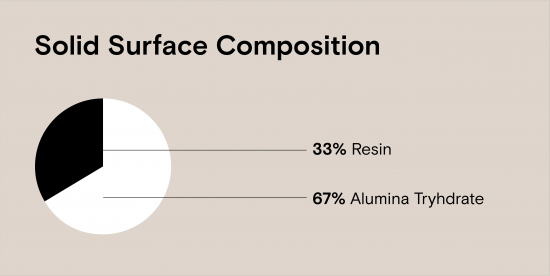 Corian is a man-made material and a brand of solid surface. It is comprised of one third acrylic polymer and two thirds natural minerals. The main ingredient is Alumina Trihydrate. This is derived from Bauxite Ore, which is one of the main components in the manufacture of aluminium.
Corian is a man-made material and a brand of solid surface. It is comprised of one third acrylic polymer and two thirds natural minerals. The main ingredient is Alumina Trihydrate. This is derived from Bauxite Ore, which is one of the main components in the manufacture of aluminium.
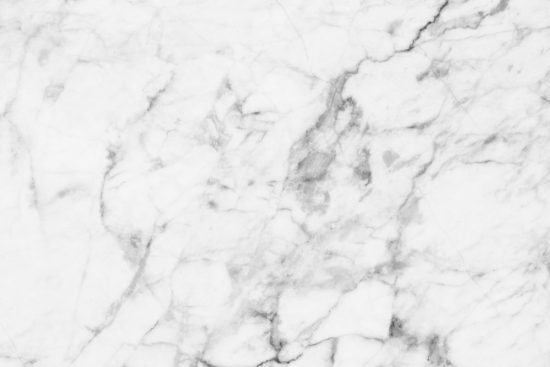 There are many varieties of marble quarried from all over the world. Each quarry produces marble with a unique composition that varies in hardness, strength, colour and veining. For example, Carrara marble is widely abundant and is mostly chosen for its beauty, inherent strength and affordability, while Calacatta marble, found only in select quarries in Carrara, is very rare and is known as the most expensive marble in the world. The very nature of marble makes it impossible to achieve the uniformity of solid surface. Conversely, this unique patterning and veining is also what gives each piece of marble its own individual character. Natural stone is available in a wide variety of colours with interesting and aesthetically pleasing finishing effects, including polished, honed, flame textured or sandblasted.
There are many varieties of marble quarried from all over the world. Each quarry produces marble with a unique composition that varies in hardness, strength, colour and veining. For example, Carrara marble is widely abundant and is mostly chosen for its beauty, inherent strength and affordability, while Calacatta marble, found only in select quarries in Carrara, is very rare and is known as the most expensive marble in the world. The very nature of marble makes it impossible to achieve the uniformity of solid surface. Conversely, this unique patterning and veining is also what gives each piece of marble its own individual character. Natural stone is available in a wide variety of colours with interesting and aesthetically pleasing finishing effects, including polished, honed, flame textured or sandblasted.
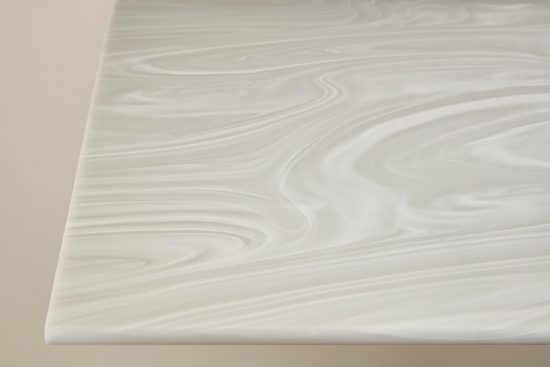 There are over 110 colours available in Corian alone, with more colours offered in other solid-surface brands. Some colours, particularly the darker finishes, are less resistant to scratches and joining than others, and are best used for decorative finishes only, rather than functional surface, such as a basin. The Splash Lab offers a curated palette of solid surface colours that we have found to be both functional and beautiful. Other colour options can be explored and tested upon request.
There are over 110 colours available in Corian alone, with more colours offered in other solid-surface brands. Some colours, particularly the darker finishes, are less resistant to scratches and joining than others, and are best used for decorative finishes only, rather than functional surface, such as a basin. The Splash Lab offers a curated palette of solid surface colours that we have found to be both functional and beautiful. Other colour options can be explored and tested upon request.
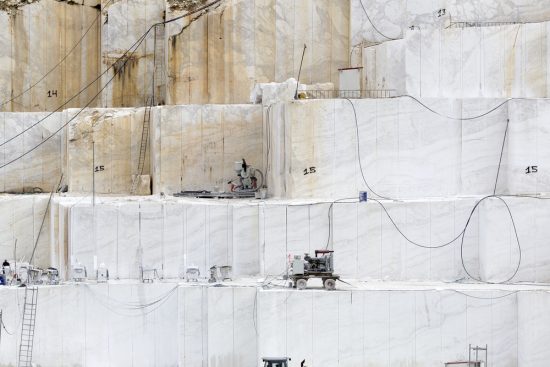 Natural stone is 100% recyclable, although marble is often not considered to be a sustainable material. This is because it is a finite natural resource and mostly requires transportation, which contributes to a high carbon footprint. However, there are several points that many man-made surfaces cannot match. For example, the marble Aerofoil wash-plane is 100% recyclable, is extremely durable and, like all natural-stone products, buildings and sculptures, can last for hundreds of years. It is infinitely better to have a long-lasting product you do not have to replace and/or recycle.
Natural stone is 100% recyclable, although marble is often not considered to be a sustainable material. This is because it is a finite natural resource and mostly requires transportation, which contributes to a high carbon footprint. However, there are several points that many man-made surfaces cannot match. For example, the marble Aerofoil wash-plane is 100% recyclable, is extremely durable and, like all natural-stone products, buildings and sculptures, can last for hundreds of years. It is infinitely better to have a long-lasting product you do not have to replace and/or recycle.
 Corian gains 8 points within the LEED criteria. It contains low Volatile Organic Compounds (VOCs), no Bisphenol A (BPA) carbon-based synthetic compounds and uses a minimum of 20% recycled content but is not recyclable (except for eco-friendly Durat). The non-recyclability of solid surface, however, is somewhat offset by its infinite ability to be repaired and its inherent stain resistance, which extends the lifetime of the product.
Corian gains 8 points within the LEED criteria. It contains low Volatile Organic Compounds (VOCs), no Bisphenol A (BPA) carbon-based synthetic compounds and uses a minimum of 20% recycled content but is not recyclable (except for eco-friendly Durat). The non-recyclability of solid surface, however, is somewhat offset by its infinite ability to be repaired and its inherent stain resistance, which extends the lifetime of the product.
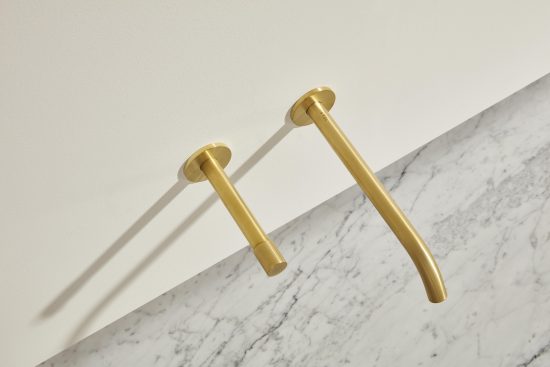 Carrara marble, like most natural stone, requires sealing to prevent permanent stains. There are nano-based treatments that work better than historical products to seal the stone.
Carrara marble, like most natural stone, requires sealing to prevent permanent stains. There are nano-based treatments that work better than historical products to seal the stone.
Due to the homogenous nature of solid surface, it is a low-maintenance material. Unlike other materials, if solid surface is damaged or chipped, it can be fixed. Although it is non-porous and stain resistant, it is best to wipe up spills as they occur – simply use a dampened micro-fibre cloth with a standard household kitchen spray and always clean in a circular motion. Accidental spills of strong chemicals (eg paint stripper, brush cleaners, metal cleaners, cleaners containing methylene chloride, acid drain cleaners, acetone based nail varnish removers etc) should be flushed promptly with plenty of soapy water to avoid damage to the surface. For nail varnish spills, non-acetone based remover can be used, and then flushed with water. An option many clients use to reduce maintenance and make cleaning even easier is to add a radius to each of the internal corners (“coving”), making them extremely easy to wipe out with no hard-to-reach spots.
 Each natural stone has a strength rating, often referred to as its Mohs hardness. The Mohs scale of mineral hardness was developed to identify the strength and hardness of any natural mineral through the ability of harder material to scratch softer material. Marble is limestone that has been compacted and heated over millions of years. As a result, marble is less porous but slightly stronger than limestone. Depending on the limestone and the mineral combination within the marble, most marble rates from three to five on the Mohs hardness scale. As with any natural stone, once it has chipped, it cannot be repaired.
Each natural stone has a strength rating, often referred to as its Mohs hardness. The Mohs scale of mineral hardness was developed to identify the strength and hardness of any natural mineral through the ability of harder material to scratch softer material. Marble is limestone that has been compacted and heated over millions of years. As a result, marble is less porous but slightly stronger than limestone. Depending on the limestone and the mineral combination within the marble, most marble rates from three to five on the Mohs hardness scale. As with any natural stone, once it has chipped, it cannot be repaired.
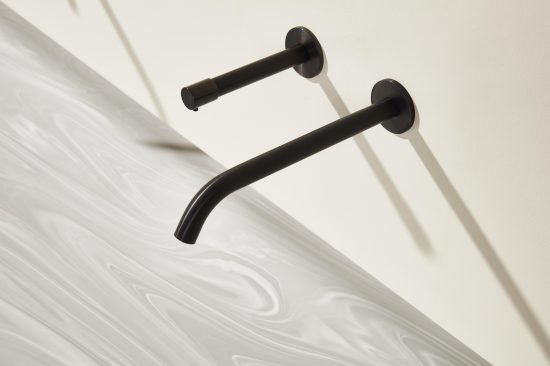 Solid surface is a very durable material. This is partly because it stays close to room temperature, making it harder to damage. Due to its homogenous nature, in the instance of a basin getting chipped, it is possible to repair this on site in a way that, like joins and seams, will never be seen. Smaller scratches are very easily cleaned or sanded out. Manufacturers generally offer 10-year warranties.
Solid surface is a very durable material. This is partly because it stays close to room temperature, making it harder to damage. Due to its homogenous nature, in the instance of a basin getting chipped, it is possible to repair this on site in a way that, like joins and seams, will never be seen. Smaller scratches are very easily cleaned or sanded out. Manufacturers generally offer 10-year warranties.
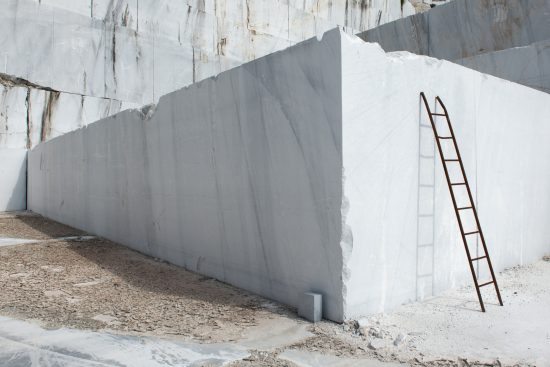 Heavier than both granite and quartz, marble is one of the weightier natural stones and is always significantly heavier than solid surface. This must be factored into the washroom space during installation, however, with products such as The Aerofoil, an in-wall hidden support system has been designed to support the weight of the marble wash-plane.
Heavier than both granite and quartz, marble is one of the weightier natural stones and is always significantly heavier than solid surface. This must be factored into the washroom space during installation, however, with products such as The Aerofoil, an in-wall hidden support system has been designed to support the weight of the marble wash-plane.
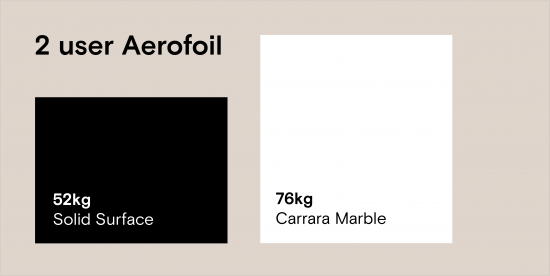 Corian is considerably lighter than marble, making the basin easier to install and cheaper to transport. For a 2 user Aerofoil basin, the difference in weight is around 24kg, with the solid-surface basin weighing 52kg and the marble version 76kg.
Corian is considerably lighter than marble, making the basin easier to install and cheaper to transport. For a 2 user Aerofoil basin, the difference in weight is around 24kg, with the solid-surface basin weighing 52kg and the marble version 76kg.
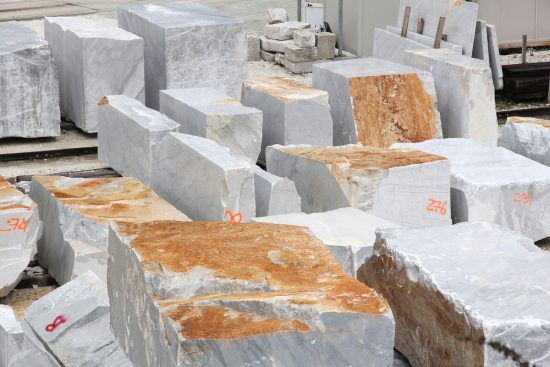 The biggest marble Aerofoil size available in one piece is three metres (the size of standard quarried blocks of raw stone), which usually equates to a five-user basin. For longer lengths, the marble can be joined, using colour-matched resin, or purposely spaced an aesthetically pleasing distance apart to make a feature of the gap.
The biggest marble Aerofoil size available in one piece is three metres (the size of standard quarried blocks of raw stone), which usually equates to a five-user basin. For longer lengths, the marble can be joined, using colour-matched resin, or purposely spaced an aesthetically pleasing distance apart to make a feature of the gap.
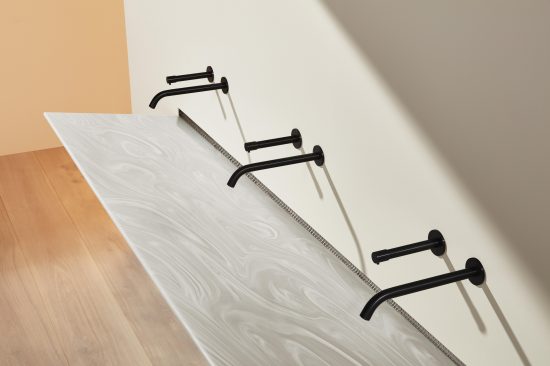 The beauty of choosing a solid surface basin is its ability to be jointed in a way that is invisible. This allows multiple units to be joined together while still giving the appearance of one sink. The Splash Lab has constructed basins over seven metres long this way, but the possibilities are endless. This process can be achieved in the workshop or onsite to allow the basin to be shipped in smaller sections for easier logistics.
The beauty of choosing a solid surface basin is its ability to be jointed in a way that is invisible. This allows multiple units to be joined together while still giving the appearance of one sink. The Splash Lab has constructed basins over seven metres long this way, but the possibilities are endless. This process can be achieved in the workshop or onsite to allow the basin to be shipped in smaller sections for easier logistics.
Provenance: Marble
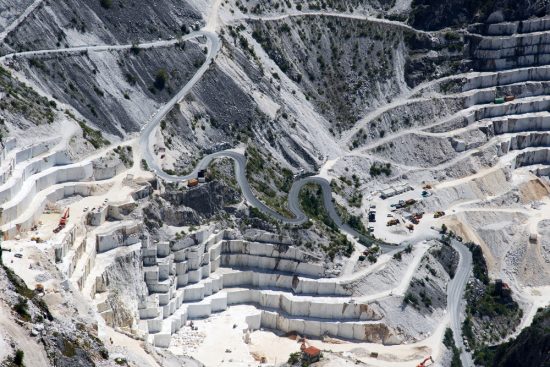
The city of Carrara is home to a 2,000-year-old marble quarry. The white and blue-grey stone found in this quarry is known as Carrara marble and has been the material of choice for some of the world’s most iconic buildings and works of art, including the Pantheon in Rome, the Venus de Milo and Michelango’s David. Marble is fabricated by sourcing, milling, grinding and polishing the raw stone, and the ancient Romans were the first society to use Carrara marble as both an interior and exterior building material. Over the next 1,000 years, the marble was quarried on such a large scale that the area became responsible for producing more stone than any other region in the world.
Provenance: Solid Surface
 In 1963, a group of engineers and researchers from the DuPont™ Chemical Company were tasked with creating new products for the building industry. Chemist Don Slocum, who was part of the DuPont ™ think-tank at the time, wanted to create a material that was non porous; stain, chemical and fire resistant; solid all the way through; void of air bubbles; hard enough to be used as a work surface; easily repairable; had a pleasing look with a consistent pattern and colour and was able to be worked with standard woodworking tools. Natural minerals and acrylic resin were heated and polymerised to form a solid-surface material with all the above properties and in 1967, Corian® was launched. There are now other brands of solid surface available, all of which have reasonably the same composition and match the product criteria of Corian.
In 1963, a group of engineers and researchers from the DuPont™ Chemical Company were tasked with creating new products for the building industry. Chemist Don Slocum, who was part of the DuPont ™ think-tank at the time, wanted to create a material that was non porous; stain, chemical and fire resistant; solid all the way through; void of air bubbles; hard enough to be used as a work surface; easily repairable; had a pleasing look with a consistent pattern and colour and was able to be worked with standard woodworking tools. Natural minerals and acrylic resin were heated and polymerised to form a solid-surface material with all the above properties and in 1967, Corian® was launched. There are now other brands of solid surface available, all of which have reasonably the same composition and match the product criteria of Corian.
Composition: Marble
 Marble is a natural stone comprised of hard, crystalline limestone. It forms when underground bodies of water evaporate, leaving deposits of limestone. If the limestone gets crushed under layer-upon-layer of tons of rock, the intense pressure and heat cause it to metamorphose into marble. In the Apuan Alps in the province of Massa and Carrara, Italy, this transformation took place during the Early Jurassic period (190 million years ago) when large areas of what is today known as north Tuscany were flooded and the limestone sediment formed a carboniferous platform. High pressure then turned the pure limestone into the white marble with smoky grey veins characteristic of Carrara.
Marble is a natural stone comprised of hard, crystalline limestone. It forms when underground bodies of water evaporate, leaving deposits of limestone. If the limestone gets crushed under layer-upon-layer of tons of rock, the intense pressure and heat cause it to metamorphose into marble. In the Apuan Alps in the province of Massa and Carrara, Italy, this transformation took place during the Early Jurassic period (190 million years ago) when large areas of what is today known as north Tuscany were flooded and the limestone sediment formed a carboniferous platform. High pressure then turned the pure limestone into the white marble with smoky grey veins characteristic of Carrara.
Composition: Solid Surface
 Corian is a man-made material and a brand of solid surface. It is comprised of one third acrylic polymer and two thirds natural minerals. The main ingredient is Alumina Trihydrate. This is derived from Bauxite Ore, which is one of the main components in the manufacture of aluminium.
Corian is a man-made material and a brand of solid surface. It is comprised of one third acrylic polymer and two thirds natural minerals. The main ingredient is Alumina Trihydrate. This is derived from Bauxite Ore, which is one of the main components in the manufacture of aluminium.
Marble: Colour Palette
 There are many varieties of marble quarried from all over the world. Each quarry produces marble with a unique composition that varies in hardness, strength, colour and veining. For example, Carrara marble is widely abundant and is mostly chosen for its beauty, inherent strength and affordability, while Calacatta marble, found only in select quarries in Carrara, is very rare and is known as the most expensive marble in the world. The very nature of marble makes it impossible to achieve the uniformity of solid surface. Conversely, this unique patterning and veining is also what gives each piece of marble its own individual character. Natural stone is available in a wide variety of colours with interesting and aesthetically pleasing finishing effects, including polished, honed, flame textured or sandblasted.
There are many varieties of marble quarried from all over the world. Each quarry produces marble with a unique composition that varies in hardness, strength, colour and veining. For example, Carrara marble is widely abundant and is mostly chosen for its beauty, inherent strength and affordability, while Calacatta marble, found only in select quarries in Carrara, is very rare and is known as the most expensive marble in the world. The very nature of marble makes it impossible to achieve the uniformity of solid surface. Conversely, this unique patterning and veining is also what gives each piece of marble its own individual character. Natural stone is available in a wide variety of colours with interesting and aesthetically pleasing finishing effects, including polished, honed, flame textured or sandblasted.
Solid Surface: Colour Palette
 There are over 110 colours available in Corian alone, with more colours offered in other solid-surface brands. Some colours, particularly the darker finishes, are less resistant to scratches and joining than others, and are best used for decorative finishes only, rather than functional surface, such as a basin. The Splash Lab offers a curated palette of solid surface colours that we have found to be both functional and beautiful. Other colour options can be explored and tested upon request.
There are over 110 colours available in Corian alone, with more colours offered in other solid-surface brands. Some colours, particularly the darker finishes, are less resistant to scratches and joining than others, and are best used for decorative finishes only, rather than functional surface, such as a basin. The Splash Lab offers a curated palette of solid surface colours that we have found to be both functional and beautiful. Other colour options can be explored and tested upon request.
Sustainability: Marble
 Natural stone is 100% recyclable, although marble is often not considered to be a sustainable material. This is because it is a finite natural resource and mostly requires transportation, which contributes to a high carbon footprint. However, there are several points that many man-made surfaces cannot match. For example, the marble Aerofoil wash-plane is 100% recyclable, is extremely durable and, like all natural-stone products, buildings and sculptures, can last for hundreds of years. It is infinitely better to have a long-lasting product you do not have to replace and/or recycle.
Natural stone is 100% recyclable, although marble is often not considered to be a sustainable material. This is because it is a finite natural resource and mostly requires transportation, which contributes to a high carbon footprint. However, there are several points that many man-made surfaces cannot match. For example, the marble Aerofoil wash-plane is 100% recyclable, is extremely durable and, like all natural-stone products, buildings and sculptures, can last for hundreds of years. It is infinitely better to have a long-lasting product you do not have to replace and/or recycle.
Sustainability: Solid Surface
 Corian gains 8 points within the LEED criteria. It contains low Volatile Organic Compounds (VOCs), no Bisphenol A (BPA) carbon-based synthetic compounds and uses a minimum of 20% recycled content but is not recyclable (except for eco-friendly Durat). The non-recyclability of solid surface, however, is somewhat offset by its infinite ability to be repaired and its inherent stain resistance, which extends the lifetime of the product.
Corian gains 8 points within the LEED criteria. It contains low Volatile Organic Compounds (VOCs), no Bisphenol A (BPA) carbon-based synthetic compounds and uses a minimum of 20% recycled content but is not recyclable (except for eco-friendly Durat). The non-recyclability of solid surface, however, is somewhat offset by its infinite ability to be repaired and its inherent stain resistance, which extends the lifetime of the product.
Maintenance: Marble
 Carrara marble, like most natural stone, requires sealing to prevent permanent stains. There are nano-based treatments that work better than historical products to seal the stone.
Carrara marble, like most natural stone, requires sealing to prevent permanent stains. There are nano-based treatments that work better than historical products to seal the stone.
Maintenance: Solid Surface
Durability: Marble
 Each natural stone has a strength rating, often referred to as its Mohs hardness. The Mohs scale of mineral hardness was developed to identify the strength and hardness of any natural mineral through the ability of harder material to scratch softer material. Marble is limestone that has been compacted and heated over millions of years. As a result, marble is less porous but slightly stronger than limestone. Depending on the limestone and the mineral combination within the marble, most marble rates from three to five on the Mohs hardness scale. As with any natural stone, once it has chipped, it cannot be repaired.
Each natural stone has a strength rating, often referred to as its Mohs hardness. The Mohs scale of mineral hardness was developed to identify the strength and hardness of any natural mineral through the ability of harder material to scratch softer material. Marble is limestone that has been compacted and heated over millions of years. As a result, marble is less porous but slightly stronger than limestone. Depending on the limestone and the mineral combination within the marble, most marble rates from three to five on the Mohs hardness scale. As with any natural stone, once it has chipped, it cannot be repaired.
Durability: Solid Surface
 Solid surface is a very durable material. This is partly because it stays close to room temperature, making it harder to damage. Due to its homogenous nature, in the instance of a basin getting chipped, it is possible to repair this on site in a way that, like joins and seams, will never be seen. Smaller scratches are very easily cleaned or sanded out. Manufacturers generally offer 10-year warranties.
Solid surface is a very durable material. This is partly because it stays close to room temperature, making it harder to damage. Due to its homogenous nature, in the instance of a basin getting chipped, it is possible to repair this on site in a way that, like joins and seams, will never be seen. Smaller scratches are very easily cleaned or sanded out. Manufacturers generally offer 10-year warranties.
Weight: Marble
 Heavier than both granite and quartz, marble is one of the weightier natural stones and is always significantly heavier than solid surface. This must be factored into the washroom space during installation, however, with products such as The Aerofoil, an in-wall hidden support system has been designed to support the weight of the marble wash-plane.
Heavier than both granite and quartz, marble is one of the weightier natural stones and is always significantly heavier than solid surface. This must be factored into the washroom space during installation, however, with products such as The Aerofoil, an in-wall hidden support system has been designed to support the weight of the marble wash-plane.
Weight: Solid Surface
 Corian is considerably lighter than marble, making the basin easier to install and cheaper to transport. For a 2 user Aerofoil basin, the difference in weight is around 24kg, with the solid-surface basin weighing 52kg and the marble version 76kg.
Corian is considerably lighter than marble, making the basin easier to install and cheaper to transport. For a 2 user Aerofoil basin, the difference in weight is around 24kg, with the solid-surface basin weighing 52kg and the marble version 76kg.
Size Constraints: Marble
 The biggest marble Aerofoil size available in one piece is three metres (the size of standard quarried blocks of raw stone), which usually equates to a five-user basin. For longer lengths, the marble can be joined, using colour-matched resin, or purposely spaced an aesthetically pleasing distance apart to make a feature of the gap.
The biggest marble Aerofoil size available in one piece is three metres (the size of standard quarried blocks of raw stone), which usually equates to a five-user basin. For longer lengths, the marble can be joined, using colour-matched resin, or purposely spaced an aesthetically pleasing distance apart to make a feature of the gap.
Size Constraints: Solid Surface
 The beauty of choosing a solid surface basin is its ability to be jointed in a way that is invisible. This allows multiple units to be joined together while still giving the appearance of one sink. The Splash Lab has constructed basins over seven metres long this way, but the possibilities are endless. This process can be achieved in the workshop or onsite to allow the basin to be shipped in smaller sections for easier logistics.
The beauty of choosing a solid surface basin is its ability to be jointed in a way that is invisible. This allows multiple units to be joined together while still giving the appearance of one sink. The Splash Lab has constructed basins over seven metres long this way, but the possibilities are endless. This process can be achieved in the workshop or onsite to allow the basin to be shipped in smaller sections for easier logistics.